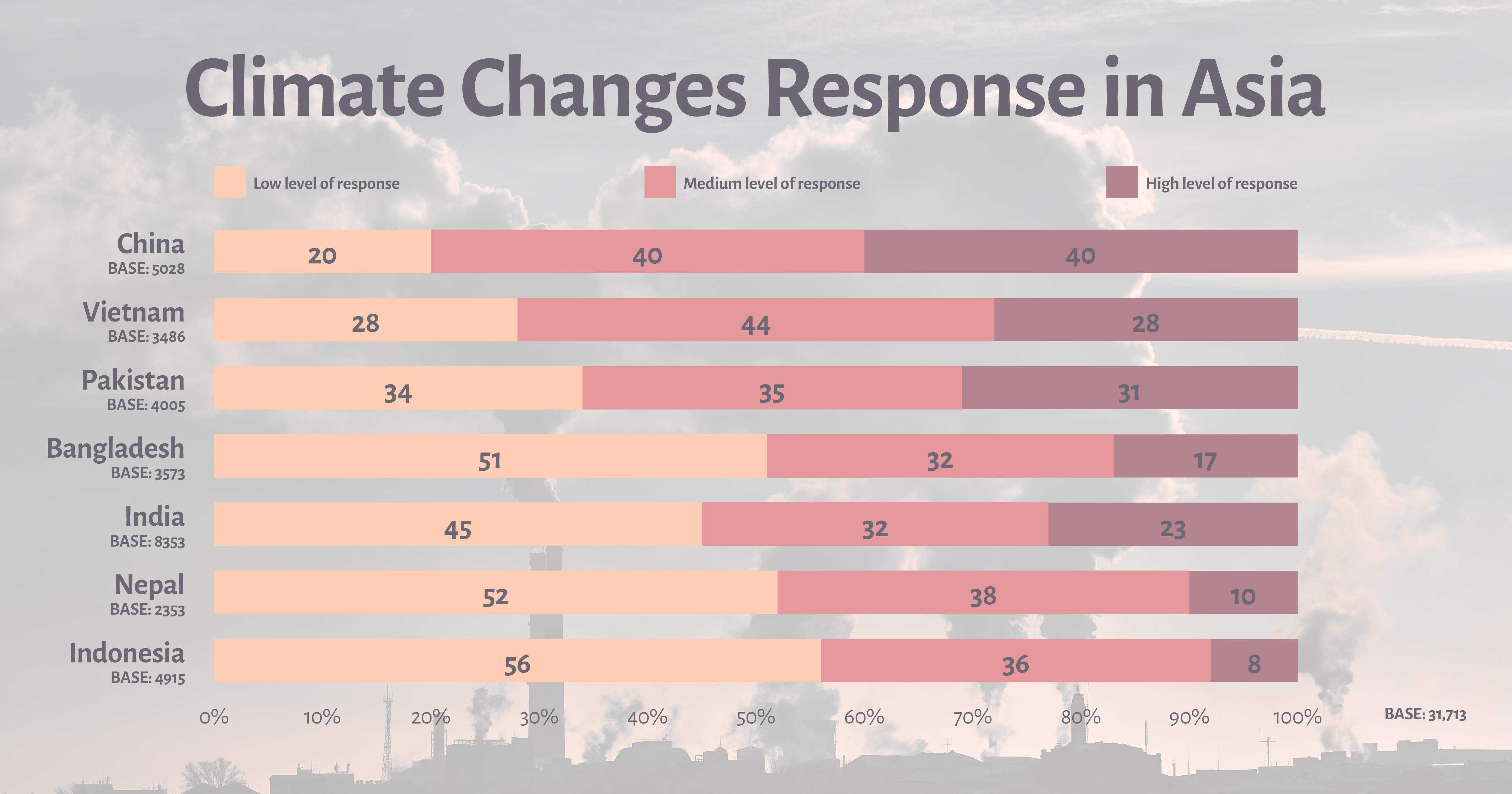- Resource Center
- Professional Development
- Articles & Videos
- Climate Change, Asia and Translations
22 February 2022
| by 1-StopAsia
Climate Change, Asia and Translations

When we mention Asia and climate change in the same sentence, people usually anticipate that the conversation will be about politics. But, to start on the right foot here, I’d like to stake a claim – no politics involved in this article, just the language industry, professional translations, and the common ground between these and climate changes.
Climate change communication
I was amazed to discover that communicating global warming strategically is pretty much the same as a marketing strategy. The first thing you do is a segmentation of your target audience, and then the choice of how to influence it. And this is where we will tie it to language and translations. Because as with any marketing strategy, people tend to understand way better when we try to communicate a message in their own languages. And saving the planet is quite an important message we’d like everyone to hear about, right?
Now, let’s get this mixed up with Asia and its diversity of languages, cultures, perceptions, and also standards of living.
Despite the fact that further down I am going to talk about two of the significant players in the picture, one thing should be clear – there is a pattern here that is valid for most countries in Asia. The most important thing is that every single country matters when it comes to shifting the direction of where our planet is heading.
Growing climate change awareness in Asia
When it comes to communicating climate change and how to prevent it there are a few very important factors influencing it, one of these being politics of course. Leaving that aside we’d like to address the other one, which is related to the keyword here – communication. The many languages of Asia and their variety pose a problem in sending our important message through to everyone even more than you can imagine.
Every professional in the industry knows what we are talking about but we’ve decided to summarize a few of the key issues we have stumbled upon when it comes to the language barrier and climate change communication.
Translation shifts the message sent and we all know how important an accurate translation is when you want to send a particular message across in another language. This is even more so when we talk about Asian languages, where a single tone can shift the meaning of a whole sentence. On the other hand, this can turn the conversation in a completely different direction and that can turn the scales up or down. And that does affect politics or local perceptions if not done properly.
With that being said, we have to be aware that most of the information delivered to any audience in the world about climate change is done via various media – video, newspapers, online news websites, and other kinds of information channels.
Specifics of reaching different audiences in Asia
Let’s take India as an example with its rural areas where the locals don’t speak English, or they are not reachable via conventional modern communication methods. Who is going to teach them to save the planet?
Climate change communication in India has been meeting various challenges and some of them are purely language-related. The first one is language diversity.
Diversity of languages leads to a diversity of media like newspapers and TV. At the same time, the media penetration is different for the different languages in the country with English and Hindi being the most spread out. Additionally, rural regions suffer the most from disinformation as there are many dialects and at the same time low media coverage.
A close second, which is valid for any country, is the fact that journalists are not professional translators meaning that a lot of the world news, actions, and basically any kind of information might be twisted in the beliefs and personal views of the people who actually do the writing. With this being said, true valid information can be reached only by professional translations which if not being in the scope of the country’s policy is not likely to happen any time soon.
The only solution to finding out relevant information is through international scientific forums held in many languages or an Asian country, where the scientific content has been delivered via professional translation.
Chinglish, Hinglish, Taglish, and more… A challenge that needs to be covered is the influence of English in modern Asian languages. We’ll go back to India here, and the fact that besides English being used alongside Hindi and other languages in the country’s official communication, a big part of the talk happens in Hindi and other local dialects. The lack of proper terminology in Hindi along with the necessity of having such very fast leads to modernizing English words into Hindi, creating the modern Hinglish. Add the illiteracy, the many dialects, and the low media penetration in some regions and we have quite a lot on our plate. If we can offer a solution for this, however, it is going to be related to offering professional translators and goodwill on behalf of the country itself.
We can’t skip a country like China, when it comes to global warming and however controversial the country and its policy towards it, we are here to discuss the linguistic issues.
So in a nutshell China’s population has a very strong awareness of climate change compared to other countries in the region.
However, when it comes to the challenges they meet it is pretty much the same as other Asian countries, meaning the diversity of languages, Chinglish, and the subjective representation of the issues from media and journalists.

Professional scientists need professional translators!
With the growing issues of our planet, the awareness of climate change is becoming more important than ever. There are scientific forums all around the world and to be on the same page professionals need professional presentations for their scientific researches and data, which is changing fast and at the same time needs to be delivered immediately to everyone else. Sounds familiar, right?
However, we’ve noticed that for Asian languages the awareness of scientists on the accuracy of the translation and linguistic issues that come with the language, is not that high. Here I’d like to point out that for languages like Chinese, Japanese, or Thai for example one may need not only translation but Desktop publishing, too and they won’t be even aware of that until the very last moment. Coming right out of our experience – even choosing the wrong font for the wrong language might make any scientist look unprofessional to a scientific forum in China for that matter.
Where am I going with all of the above?
I was thinking the same while I was researching the topic – how can we possibly get translations, language, and climate change connected? The moment I started writing though, I didn’t need to think of a direction anymore. At the end of the day, the most important thing I want to address is awareness…about our planet, about our children, about being The Ambassadors and reaching out to every single person out there. And what better way to do that than sending one and the same message in every single language we have… “Save Our Planet!”

Gergana Toleva
Gergana Toleva is the Global Marketing Manager at 1-StopAsia. She has 12 years of experience in sales prior to working as a marketing professional. Gergana holds an Engineering Bachelor’s Degree in “Automation, Information, and Control Techniques” from the University of Food Technologies in Bulgaria.


